#nanshe's graphics
Text
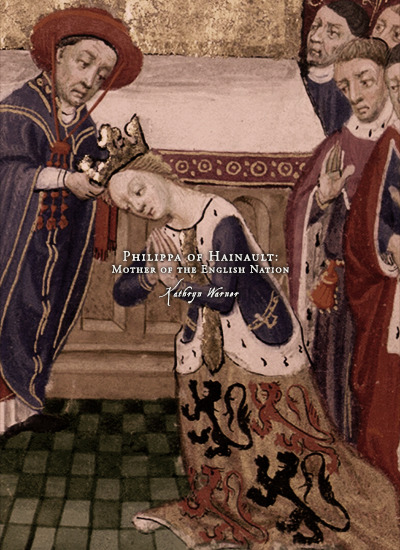

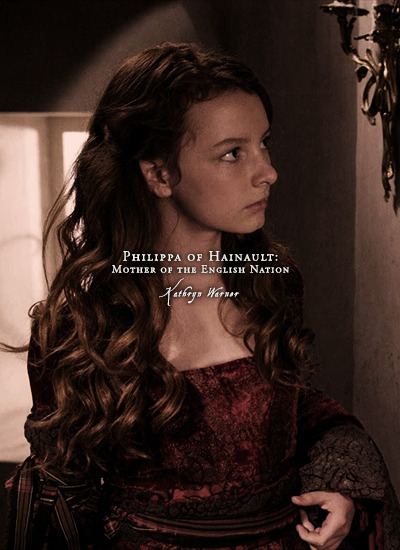


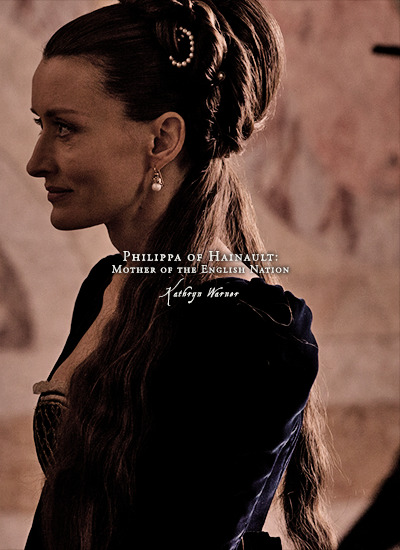
Favorite History Books || Philippa of Hainault: Mother of the English Nation by Kathryn Warner ★★★★☆
Edward III, king of England, was fifteen years old at the time of his wedding in York on 24 or 25 January 1328, and Philippa of Hainault, his bride, was perhaps fifteen months or so younger and, according to one chronicler, about to turn fourteen. Although their marriage was to endure for more than four decades and would prove to be a most happy and successful one that produced a dozen children, it could hardly have begun in a more unromantic fashion. Edward’s mother Queen Isabella had arranged her son’s marriage with Philippa’s father Willem, count of Hainault in 1326 so that he would provide ships and mercenaries for her to invade her husband Edward II’s kingdom in order to bring down the man she loathed above all others, Edward II’s adored chamberlain and perhaps lover Hugh Despenser the Younger. Just a month before his wedding to Philippa, Edward III had attended the funeral of his deposed, disgraced and possibly murdered father, the former king, at St Peter’s Abbey in Gloucestershire. Whether intentionally or not, Edward III and Philippa of Hainault married on his parents’ twentieth wedding anniversary, and on the first anniversary of the young Edward’s reign as king of England.
Philippa of Hainault accompanied her husband abroad on many of his military and diplomatic missions; the couple hated to be apart for long and spent as much time together as they possibly could. Despite Philippa’s decades-long marriage to one of medieval England’s most famous and successful kings, there has only ever been one full-length biography of her, published by Blanche Christabel Hardy in 1910 and titled Philippa of Hainault and Her Times. In addition, two chapters in Agnes Strickland’s nineteenth-century work The Lives of the Queens of England cover the basics of Philippa’s life, and Lisa Benz St John’s 2012 book Three Medieval Queens examines the lives of Philippa and her two predecessors as queen of England.
#litedit#historyedit#house of plantagenet#philippa of hainaut#medieval#french history#belgian history#english history#european history#women's history#history#history books#nanshe's graphics
62 notes
·
View notes
Text
Can y'all help me? So, I caved and decided that I will add Idgrod Ravencrone and the lady in this graphic is perfect but idk her name. Could you please help me identify her? Link is here.
2 notes
·
View notes
Link
Dongguan Jiarong Handbags Manufactory Co.,Ltd.
86-769-23054323 18024331172
Room 301, Building 4, No. 42 Zhennan Road, Nanshe, Chashan Town, Dongguan, Guangdong, China 523391, Dongguan, Guangdong, China
Since 2009,Dongguan Jiarong Handbags Manufactory Co.,Ltd. is a promotional bags Supplier & Manufacturer, which integrates developing, designing, producing, sales and service. Also have more than 10 Years OEM services.Our main products are: Eco-Friendly Cotton Mesh/Net bags, Eco-Friendly Cotton/ Canvas shopping bags,Recycled PET handbags, Organic cotton handbagsFoldable Backpack/Drawstring backpacks,Foldable shopping bags & Sport bags, Aprons, Neck Wallets & Badge Holders,Cosmetic bags,Jewelry Pouches/Shoe bags,Document bags & Pencil bags, Jute Pouches & tote bags, Non-woven bags, Neoprene Sport protective productsTo meet most of our customer’s needs, our factory has expanded a new production line for Neoprene Sport protective products in 2018, the products are ankle brace, back brace, knee brace, waist brace… and related neoprene bag products,like laptop sleeve, lunch bag,wine bag and so on, all of our products are sold well.Our factory is committed to creating environmentally friendly products, such as RPET recycled materials, organic cotton, pure cotton, etc., and can provide relevant certificates for the mass order; all our materials are eco-friendly dyeing, can pass REACH, EN71, AZO and other environmental testing.Our factory have owned BSCI Audit and the SGS Verified Assessment Supplier, With excellent product quality, reasonable product price and fast delivery speed, our factory has successfully sold to Europe, America, Japan, United Arab Emirates and other countries. In the past two years, our factory is the supplier and Shipper for Amazon and Ebay merchants. Why Choose us?1. Our in-house team of highly talented and innovative designers can meet all of your creative needs, including product design & graphic design.2. Low MOQ500pcs for most of our products3. You will receive professional service, the perfect contact from an inquiry to delivery, Our aim is to provide the best promotional bags, high quality and competitive price for your company, on time.4. Air/Sea Delivery: Only work with 100% reliable transport companies, like UPS, DHL, FedEx, TNT for Air delivery, FOB based on your Sea forwarder and CIF terms.Quality ControlThe quality standard we apply is usually Standard AQL II – Major defectives: 2.5 AQ – Minor defectives 4.0.We also accept the 3rd Party inspects the order during the production period.The process of the Quality Control:Artwork/Graphic checking: Make sure the logo and design are correct before make the sampleMaterial: Checks and verifies all materials used are correctViability test: Verifying compliance with specific parameters such as weight capacity, dropping test and others.Production test: inspect the stitching threads, process, printing logo, accessories during the production period.Finished products checking: checks the finished product 100% prior to shipment
0 notes
Text
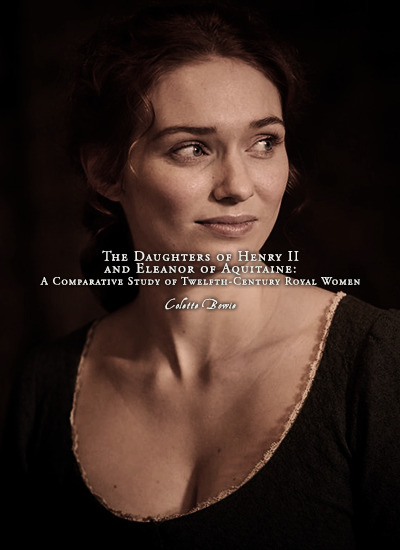


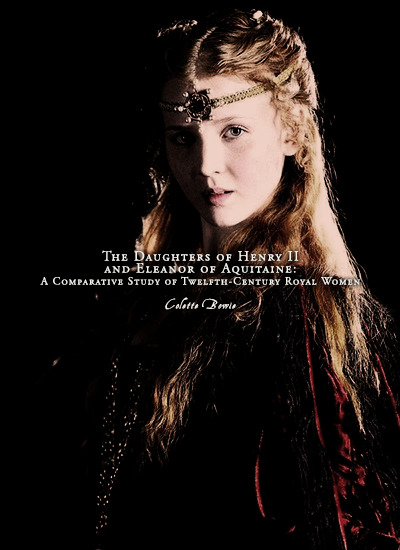


Favorite History Books || The Daughters of Henry II and Eleanor of Aquitaine: A Comparative Study of Twelfth-Century Royal Women by Colette Bowie ★★★★☆
This study compares and contrasts the experiences of the three daughters of Henry II and Eleanor of Aquitaine. The exogamous marriages of Matilda, Leonor, and Joanna, which created dynastic links between the Angevin realm and Saxony, Castile, Sicily and Toulouse, served to further the political and diplomatic ambitions of their parents and spouses. It might be expected that their choices in religious patronage and dynastic commemoration would follow the customs and patterns of their marital families, yet the patronage and commemorative programmes of Matilda, Leonor, and Joanna provide evidence of possible influence from their natal family which suggests a coherent sense of family consciousness.
To discern why this might be the case, an examination of the childhoods of these women has been undertaken (Part I), to establish what emotional ties to their natal family may have been formed at this impressionable time. In Part II, the political motivations for their marriages are analysed, demonstrating the importance of these dynastic alliances, as well as highlighting cultural differences and similarities between the courts of Saxony, Castile, Sicily, and the Angevin realm. Dowry and dower portions (Part III) are important indicators of the power and strength of both their natal and marital families, and give an idea of the access to economic resources which could provide financial means for patronage. Having established possible emotional ties to their natal family, and the actual material resources at their disposal, the book moves on to an examination of the patronage and dynastic commemorations of Matilda, Leonor and Joanna (Parts IV-V), in order to discern patterns or parallels. Their possible involvement in the burgeoning cult of Thomas Becket, their patronage of Fontevrault Abbey, the names they gave to their children, and finally the ways in which they and their immediate families were buried, suggest that all three women were, to varying degrees, able to transplant Angevin family customs to their marital lands. The resulting study, the first of its kind to consider these women in an intergenerational dynastic context, advances the hypothesis that there may have been stronger emotional ties within the Angevin family than has previously been allowed for.
#historyedit#history books#litedit#house of plantagenet#english history#medieval#french history#european history#women's history#history#nanshe's graphics
54 notes
·
View notes
Text



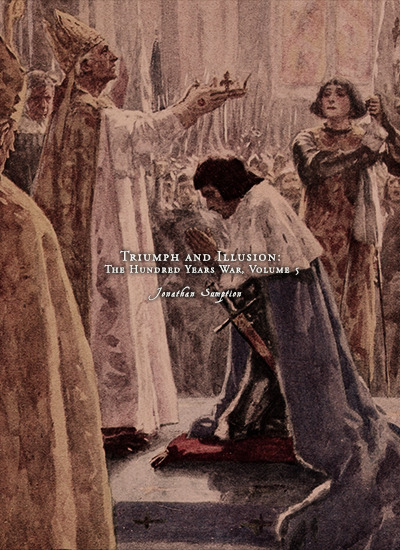
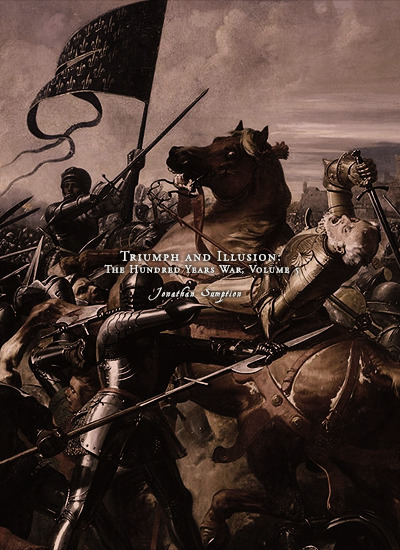
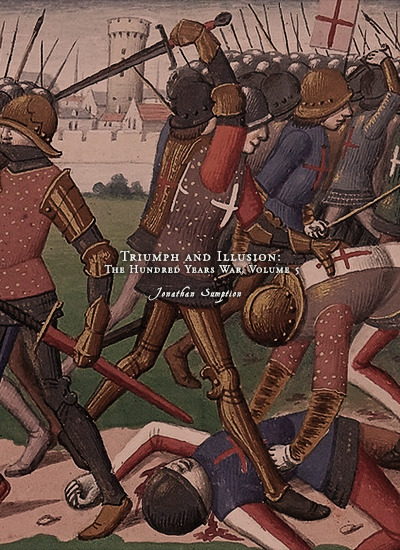
Favorite History Books || Triumph and Illusion: The Hundred Years War Volume 5 by Jonathan Sumption ★★★★☆
The wheel of fortune is one of the most ancient symbols of mankind, an image of capricious fate and the transience of human affairs. In the late middle ages it was everywhere, in illuminated manuscripts, in wall paintings and stained glass, in sermons and homilies, in poetry and prose. ‘The wheel of fortune turneth as a ball, sudden climbing axeth a sudden fall,’ wrote John Lydgate in The Fall of Princes, a work commissioned by one of the dominant figures in this history, Cardinal Henry Beaufort. The present volume traces the remarkable recovery of France in barely two decades from the lowest point of its fortunes to the dominant position in Europe which it had enjoyed before the wars with England. Sudden climbing axeth a sudden fall. These years saw the collapse of the English dream of conquest in France from the opening years of the reign of Henry VI, when the battles of Cravant and Verneuil consolidated their control of most of northern France, until the loss of all their continental dominions except Calais. This sudden reversal of fortune, inexplicable to many contemporary Englishmen, was a seminal event in the history of the two principal nation-states of western Europe. It brought an end to four centuries of the English dynasty’s presence in France, separating two countries whose fortunes had once been closely intertwined. It created a new sense of identity in both of them. In large measure, the divergent fortunes of the French and English states over the following centuries flowed from these events.
The passions generated by ancient wars eventually fade, but those provoked by the wars of the English in fifteenth-century France have proved to be surprisingly durable. The foundations of scholarship on the period were laid by patriotic French historians of the nineteenth century, writing under the shadow of Waterloo and Sedan. The passage of the centuries did nothing nothing to soften their indignation about the fate of their country in the time of Henry VI and the Duke of Bedford. The extraordinary life and death of Joan of Arc defied historical objectivity until quite recently. Joan’s story became the focus of disparate but powerful political passions: nationalism, Catholicism, royalism and intermittent anglophobia. Much of what has been written falsifies history by attributing to medieval men and women the notions of another age. But myths are powerful agents of national identity. The great French historian Marc Bloch once wrote that no Frenchman could truly understand his country’s history unless he thrilled at the story of Charles VII’s coronation at Reims. Writing in the summer of 1940 in the aftermath of a terrible defeat, Bloch looked to an earlier recovery from the edge of disaster for reassurance about the survival of France.
If there is a corresponding English myth, it is in the history plays of Shakespeare. The great speeches which he gave to John of Gaunt and Henry V belong to the classic canon of English patriotism. His three plays about Henry VI, a truncated story of discord at home and defeat abroad, never reach the same heights. Yet they serve to remind us that behind the clash of arms and principles were men and women of flesh and blood. I have tried at every page to remember that they were not cardboard cut-outs. They endured hunger, saddle-sores and toothache. They experienced fear and elation, joy and disappointment, shame and pride, ambition and exhaustion. At the level of government, they were trapped by the logic of war, lacking the resources to conquer or even to defend what they had, and yet unable to make peace. It was the tragedy of the English that, after an initial surge of optimism in the 1420s, they realised that the war could not be won, but were forced to fight on by the memory of Henry V’s triumphs and the incapacity of his son, until disaster finally engulfed them.
#litedit#historyedit#hundred years' war#medieval#history books#french history#english history#european history#history#nanshe's graphics
43 notes
·
View notes
Text










Posthumous Characters GIF Sets → Saera Targaryen
Even then, Septon Barth tells us, Princess Saera might have been forgiven and restored to favor if she had done as she was told, if she had remained meekly in her chambers reflecting on her sins and praying for forgiveness. Jaehaerys and Alysanne met all the next day with Barth and Grand Maester Elysar, discussing what was to be done with the six sinners, particularly the princess. The king was angry and unyielding, for his shame was deeply felt, and he could not forget Saera’s taunting words about his uncle’s wives. “She is no longer my daughter,” he said more than once. Queen Alysanne could not find it in her heart to be so harsh, however.
“She is our daughter,” she told the king. “She must be punished, yes, but she is still a child, and where there is sin there can be redemption. My lord, my love, you reconciled with the lords who fought for your uncle, you forgave the men who rode with Septon Moon, you reconciled with the Faith, and with Lord Rogar when he tried to tear us apart and put Aerea on your throne, surely you can find some way to reconcile with your own daughter.”
Her Grace’s words were soft and gentle, and Jaehaerys was moved by them, Septon Barth tells us. Alysanne was stubborn and persistent and she had a way of bringing the king around to her own point of view, no matter how far apart they had been at the start. Given time, she might have softened his stance on Saera as well.
She would not have that time. That very night, Princess Saera sealed her fate.
#asoiafedit#valyrianscrolls#saera targaryen#house targaryen#a song of ice and fire#asoiaf gifs#nanshe's graphics
63 notes
·
View notes
Text








Posthumous Characters GIF Sets → Alysanne “Black Aly” Blackwood
It is Mushroom who provides the most lucid explanation for this surprising leniency in the Wolf of Winterfell. It was not the prince who swayed him, the fool claims, nor the looming threat of the Velaryon fleets, nor even the entreaties of the twins, but rather a bargain struck with Lady Alysanne of House Blackwood.
“A lean tall creature was this wench,” says the dwarf, “thin as a whip and flat-chested as a boy, but long of leg and strong of arm, with a mane of thick black curls that tumbled down past her waist when loosed.” Huntress, horse-breaker, and archer without peer, Black Aly had little of a woman’s softness about her. Many thought her to be of that same ilk as Sabitha Frey, for they were oft in one another’s company, and had been known to share a tent whilst on the march. Yet in King’s Landing, whilst accompanying her young nephew Benjicot at court and council, she had met Cregan Stark and conceived a liking for the stern Northman.
And Lord Cregan, a widower these past three years, had responded in kind. Though Black Aly was no man’s Queen of Love and Beauty, her fearlessness, stubborn strength, and bawdy tongue struck a chord for the Lord of Winterfell, who soon began to seek out her company in hall and yard. “She smells of wood smoke, not of flowers,” Stark told Lord Cerwyn, said to be his closest friend.
#asoiafedit#valyrianscrolls#alysanne blackwood#house blackwood#house stark#a song of ice and fire#asoiaf gifs#nanshe's graphics
59 notes
·
View notes
Text










Tertiary Characters GIF Sets → Tytos Blackwood
She found Robb beneath the green canopy of leaves, surrounded by tall redwoods and great old elms, kneeling before the heart tree, a slender weirwood with a face more sad than fierce. His longsword was before him, the point thrust in the earth, his gloved hands clasped around the hilt.
Around him others knelt: Greatjon Umber, Rickard Karstark, Maege Mormont, Galbart Glover, and more. Even Tytos Blackwood was among them, the great raven cloak fanned out behind him. These are the ones who keep the old gods, she realized. She asked herself what gods she kept these days, and could not find an answer.
#asoiafedit#valyrianscrolls#tytos blackwood#house blackwood#a song of ice and fire#asoiaf gifs#nanshe's graphics
60 notes
·
View notes
Text










Legendary Heroes GIF Sets → Brandon the Builder
The greatest castle of the North is Winterfell, the seat of the Starks since the Dawn Age. Legend says that Brandon the Builder raised Winterfell after the generation-long winter known as the Long Night to become the stronghold of his descendants, the Kings of Winter.
As Brandon the Builder is connected with an improbable number of great works (Storm’s End and the Wall, to name but two prominent examples) over a span of numerous lifetimes, the tales have likely turned some ancient king, or a number of different kings of House Stark (for there have been many Brandons in the long reign of that family) into something more legendary.
#asoiafedit#valyrianscrolls#bran the builder#house stark#age of heroes#a song of ice and fire#asoiaf gifs#nanshe's graphics
52 notes
·
View notes
Text

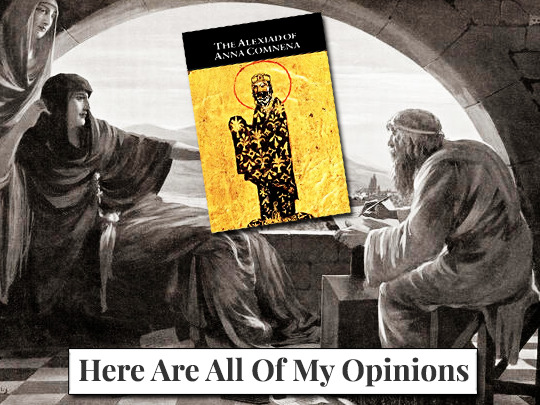
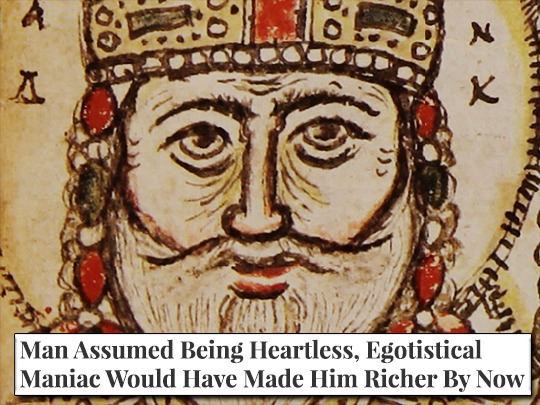
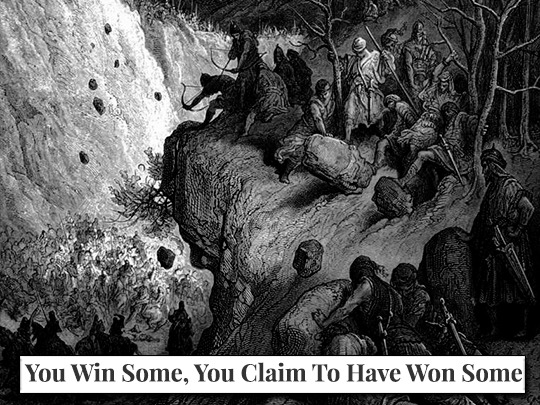



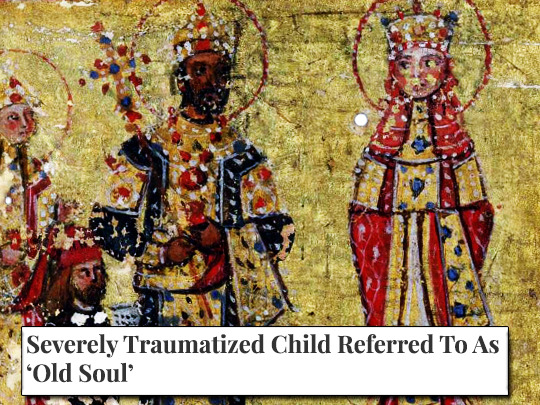


Byzantine Empire, 11th-13th Centuries + The Onion Headlines
#historyedit#byzantine empire#asian history#european history#the onion headlines#history#nanshe's graphics
89 notes
·
View notes
Photo




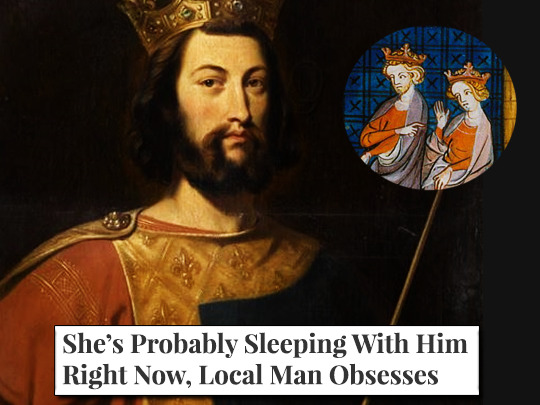





High Middle Ages + The Onion headlines, part II
#middle ages#medieval#historyedit#european history#asian history#history#the onion headlines#nanshe's graphics
113 notes
·
View notes
Text
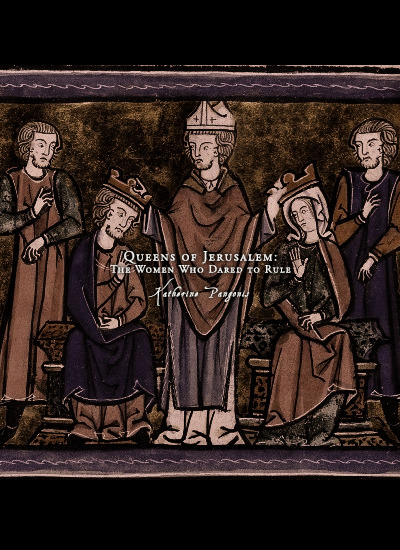
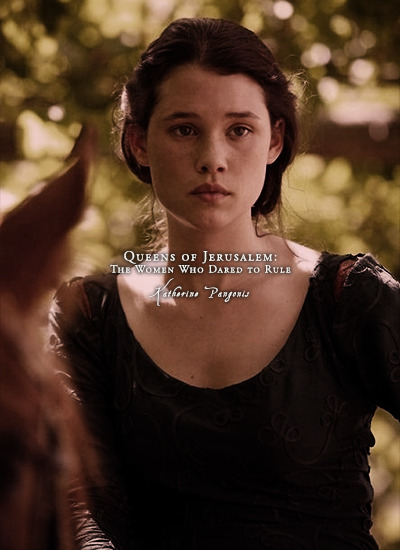
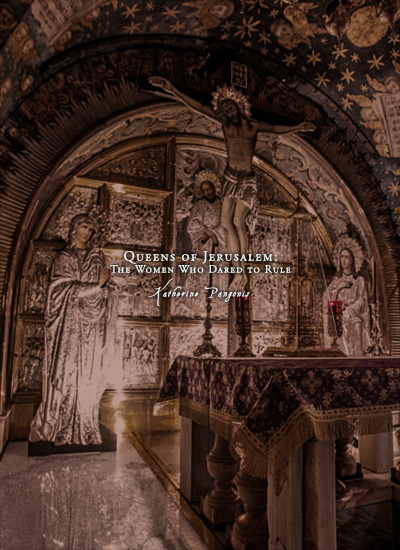


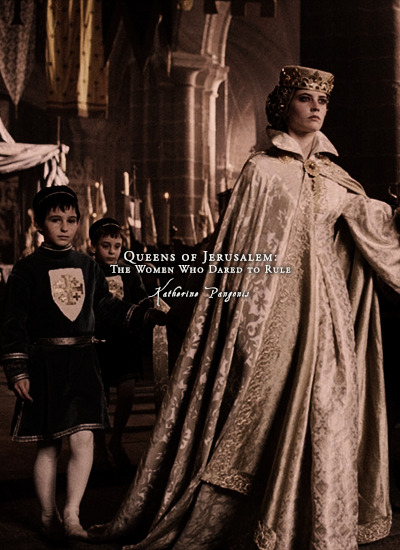
Favorite History Books || Queens of Jerusalem: The Women Who Dared to Rule by Katherine Pangonis ★★★★☆
Despite these clearly documented roles, the vast majority of crusades historians, both medieval and modern, have neglected the roles of women in their histories. This book intends to go some way towards fixing this imbalance by shedding some light on the deeds of women in positions of authority in Outremer: specifically, the dynasty of formidable women rulers founded by Morphia of Melitene, the first crowned Queen of Jerusalem. Her daughters and granddaughters reigned as Queens of Jerusalem, Princesses of Antioch, Countesses of Tripoli, and held many other positions as well. They represent some of the most daring, devious and devoted women that history has ever seen. The source material available on these women is sparse in comparison to what we have regarding their husbands and fathers, but enough survives to construct vivid portraits of these remarkable queens and princesses.
... The two central figures of this book are Queen Melisende of Jerusalem and Queen Sibylla of Jerusalem. These women, grandmother and granddaughter, served as Queens Regnant of Jerusalem, and consequently there is considerably more source material written about them than the other noblewomen of Outremer. However, the lives of their mothers, sisters, nieces and cousins, ruling variously as Queens Consort of Jerusalem and Princesses of Antioch, are also worthy of note, playing pivotal roles in the internal politics of Outremer.
#litedit#historyedit#medieval#crusader states#european history#asian history#history#history books#nanshe's graphics
30 notes
·
View notes
Text






Posthumous Character Relationships → Naerys Targaryen & Melissa Blackwood
Both younger and prettier than Lady Barba (albeit far less buxom), as well as more modest, Missy had a kind heart and generous nature that led even Queen Naerys herself—as well as the Dragonknight and Prince Daeron—to befriend her.
#asoiafedit#valyrianscrolls#naerys targaryen#melissa blackwood#house targaryen#house blackwood#a song of ice and fire#asoiaf gifs#nanshe's graphics
43 notes
·
View notes
Text








Posthumous Characters GIF Sets → Quellon Greyjoy
Near the end of Haereg’s great work you will come to Lord Quellon Greyjoy, the wisest of the men to sit the Seastone Chair since Aegon’s Conquest. A huge man, six and a half feet tall, he was said to be as strong as an ox and as quick as a cat. In his youth he earned renown as a warrior, fighting corsairs and slavers in the Summer Sea.
A leal servant of the Iron Throne, he led a hundred longships around the bottom of Westeros during the War of the Ninepenny Kings and played a crucial role in the fighting around the Stepstones.
#asoiafedit#valyrianscrolls#quellon greyjoy#house greyjoy#ironborn#a song of ice and fire#asoiaf gifs#nanshe's graphics
46 notes
·
View notes
Text










Posthumous Characters GIF Sets → Rhea Royce
A year later, in 115 AC, there came a tragic mishap, of the sort that shapes the destiny of kingdoms: the “bronze bitch” of Runestone, Lady Rhea Royce, fell from her horse whilst hawking and cracked her skull upon a stone. She lingered for nine days before finally feeling well enough to leave her bed…only to collapse and die within an hour of rising.
A raven was duly sent to Storm’s End, and Lord Baratheon dispatched a messenger by ship to Bloodstone, where Prince Daemon was still struggling to defend his meagre kingdom against the men of the Triarchy and their Dornish allies. Daemon flew at once for the Vale. “To put my wife to rest,” he said, though more like it was in the hopes of laying claim to her lands, castles, and incomes. In that he failed; Runestone passed instead to Lady Rhea’s nephew, and when Daemon made appeal to the Eyrie, not only was his claim dismissed, but Lady Jeyne warned him that his presence in the Vale was unwelcome.
#asoiafedit#valyrianscrolls#rhea royce#house royce#a song of ice and fire#asoiaf gifs#nanshe's graphics
46 notes
·
View notes
Text


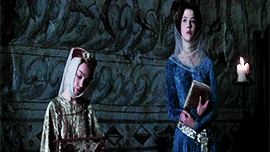
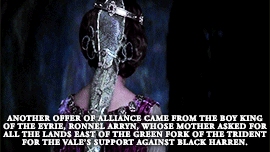






Posthumous Characters GIF Sets → Sharra Arryn
Queen Sharra of the Vale, regent for her son Ronnel, took refuge in the Eyrie, looked to her defenses, and sent an army to the Bloody Gate, gateway to the Vale of Arryn. In her youth Queen Sharra had been lauded as “the Flower of the Mountain,” the fairest maid in all the Seven Kingdoms.
Perhaps hoping to sway Aegon with her beauty, she sent him a portrait of herself and offered herself to him in marriage, provided he named her son Ronnel as his heir. Though the portrait did finally reach him, it is not known whether Aegon Targaryen ever replied to her proposal; he had two queens already, and Sharra Arryn was by then a faded flower, ten years his elder.
#asoiafedit#valyrianscrolls#sharra arryn#house arryn#a song of ice and fire#asoiaf gifs#nanshe's graphics
51 notes
·
View notes